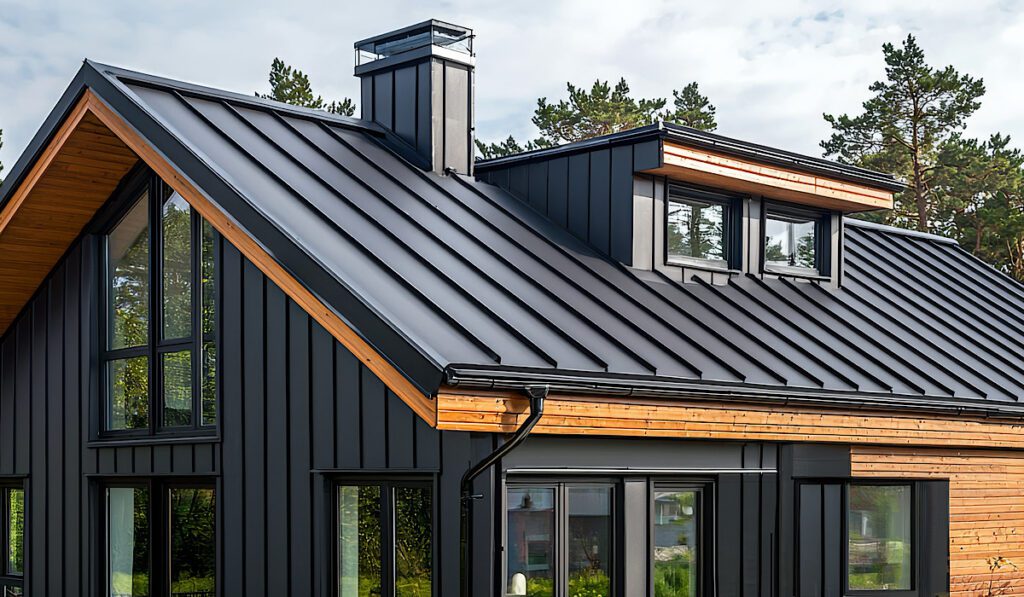Protecting Your Idaho Shop From Moisture, Mold, and Structural Wear
When building a custom shop in Idaho, many property owners focus on size, layout, and finishes—but overlook two of the most critical design factors: drainage and ventilation. Without proper water management and airflow, even the most well-built pole barn or workshop can face costly issues down the line, including rot, mold, condensation damage, and structural shifting.
Idaho’s seasonal conditions—wet springs, dry summers, and heavy winter snow loads—make planning for moisture control essential. This guide walks through the best practices for integrating proper drainage and ventilation systems into your custom shop build from the ground up.
Why Drainage & Ventilation Matter in Idaho
Custom shops built in rural or semi-rural parts of Idaho face unique exposure to moisture-related threats. From melting snowpack to clay-heavy soils that retain water, runoff and condensation can compromise foundation stability and indoor air quality if not addressed.
Top risks of poor drainage and ventilation include:
- Floor cracking and foundation heaving
- Water pooling at door entries and slab edges
- Mold growth and mildew odors in enclosed areas
- Rusting tools and degrading insulation
- Condensation dripping from ceilings in winter
To prevent these issues, successful Idaho builders incorporate water flow management and airflow systems directly into shop design—not as afterthoughts.
Smart Drainage Planning for Custom Shops
Drainage begins before the first post is set. The goal is to direct all surface water away from the shop’s foundation, slab, and entry points. Here’s how to build it into your plan:
Site Grading and Elevation
- Always grade the site so that the building pad is at least 6–12 inches higher than surrounding land
- Maintain a 2–5% slope away from the structure on all sides
Perimeter Drainage Solutions
- Use French drains or gravel trenches to collect and redirect runoff
- Install downspout extensions on all roof lines to push water beyond the slab edge
- Incorporate splash blocks and diverters to reduce soil erosion
Interior Drainage Considerations
- For shops with wash bays or plumbing, slope interior floors slightly toward trench drains or floor drains
- Seal all slab edges and expansion joints to prevent water wicking
In Idaho’s high-clay or sloped regions, proper drainage can be the difference between a dry shop and one that requires expensive slab repairs just a few years in.
Designing Effective Ventilation Systems
Ventilation in pole barns and custom shops controls temperature, disperses fumes, and prevents condensation—particularly critical for Idaho winters when warm indoor air meets freezing outside temperatures.
Types of Ventilation to Consider:
Ridge Vents: Passive system that runs along the peak of the roof, allowing hot, moist air to escape upward
Gable Vents: Installed on end walls to promote cross ventilation. Ideal for buildings without ceiling insulation
Soffit Vents: Allow cooler air to enter near the eaves and rise through the structure, supporting natural airflow
Mechanical Exhaust Fans: Essential in high-use shops or where welding, painting, or machinery operation creates heat or fumes
Dehumidifiers & HVAC Integration: For climate-controlled shops, mechanical systems with air exchange or dedicated humidity control improve comfort and protect stored goods
Bonus Tip: In shops where metal roofing meets cold Idaho air, roof insulation plus venting is critical to avoid condensation forming on the interior underside of the roof—one of the most common issues in uninsulated pole barns.
Drainage & Ventilation Features
| Feature Type | Recommended Element | Purpose |
| Exterior Drainage | Graded site, French drain, downspouts | Redirect water from slab and entrances |
| Interior Drainage | Sloped floor, floor drain | Collect water from equipment or spills |
| Passive Ventilation | Ridge vents, gable vents, soffit vents | Circulate air without electricity |
| Mechanical Venting | Exhaust fans, HVAC integration | Control air quality and humidity year-round |
Frequently Asked Questions
Do Idaho building codes require ventilation or drainage plans?
While specifics vary by county, most code offices require water runoff and moisture mitigation plans—especially on properties with heavy snowfall or sloped terrain.
Can I add drainage or ventilation after construction?
Yes, but it’s significantly more expensive and less effective. Drainage retrofits require excavation; ventilation systems may need new framing or ducting.
What’s the best floor coating to resist moisture?
Epoxy-coated concrete or sealed slabs are both excellent for resisting moisture intrusion and making cleanup easier.
How do I know if my site needs advanced drainage?
If the soil retains water (e.g., clay-heavy areas) or if your site sits near a low-lying area, it’s wise to install perimeter drains and consider raising the pad further.
Build Dry, Build Smart
Moisture damage and poor airflow can quietly undermine a shop’s structure, equipment, and usability over time. That’s why Cascade Custom Construction integrates smart drainage systems and ventilation strategies into every Idaho custom shop they build—whether for tools, livestock, or business operations.
Avoid mold, condensation, and slab damage before they begin. Call Cascade Custom Construction at 866-692-9383 to ensure your custom shop is built to stay dry, strong, and safe in every Idaho season.


